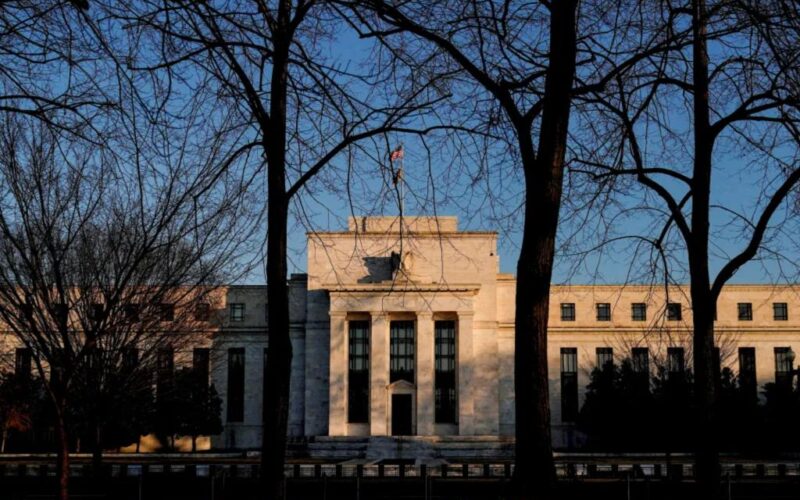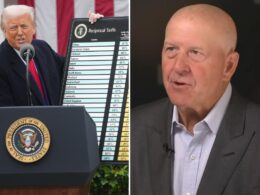The Federal Reserve on Wednesday once again left interest rates unchanged — despite repeated calls from President Trump for Fed Chair Jerome Powell to slash rates immediately.
Instead, policymakers cited heightened economic uncertainty from Trump’s trade war for their decision to keep the Fed funds rate between 4.25% and 4.5% range, where it has been since December.
In its policy note, the Fed said that risks of higher inflation and unemployment have increased, and that some data has been impacted by “swings in net exports” — a nod to a shrinking GDP report last week as companies rushed to import goods ahead of Trump’s tariffs.
Trump has lashed out at Powell, calling him “a major loser” for not acting quicker to boost the economy, but on Monday backtracked on threats to fire the central bank boss.
The Dow was up 250 points, or 0.6%, before the Fed policy note’s release at 2 p.m. The blue-chip index quickly dipped after the announcement, losing nearly all of its gains.
The Fed’s decision to extend its “wait-and-see” approach was widely expected in the wake of mixed economic data over the past few weeks and ongoing trade talks.
Gross domestic product unexpectedly fell 0.3% in the first three months of the year, seemingly fulfilling the Fed’s prediction in March of faltering economic growth, according to data released by the Commerce Department last week.
That dip into negative territory, though, is largely the result of a surge of imports as companies rushed to beat Trump’s tariffs.
Meanwhile, hiring remained relatively healthy in April as US employers added a better-than-expected 177,000 jobs, the Bureau of Labor Statistics said on Friday.
But consumer sentiment has tanked – plummeting 11% in April to 50.8, the second-lowest reading on record dating back to 1952, according to the University of Michigan’s survey.
Meanwhile, market jitters have returned – snapping the S&P 500’s nine-day winning streak on Monday – as investors struggle to digest an onslaught of conflicting trade talk headlines.
During his testimony before a House subcommittee on Tuesday, Treasury Secretary Scott Bessent appeared to contradict repeated claims over the past few weeks from Trump, who has said China negotiations have been ongoing and that Chinese President Xi Jinping had called him.
Bessent gave investors some hope when he said the US has received several “good offers” from other nations on trade deals.
He “would be surprised” if the US doesn’t have 80% or 90% of deals with its largest trading partners wrapped up by the end of the year, or “as early as this week,” Bessent continued.
But Trump sent stocks on another slide during a high-stakes meeting with Canadian Prime Minister Mark Carney, when he told reporters that the US doesn’t “have to sign” any deals.
“We don’t have to sign deals. They [foreign nations] have to sign deals with us. They want a piece of our market, we don’t want a piece of their market,” Trump said.








